Trauma-Informed Practice Framework
NHS BNSSG

A document for healthcare practitioners across Bath, North Somerset and South Gloucestershire to advise and assist in implementing Trauma-Informed Practice across all areas of work.
Wanting to avoid use of photographs and overt imagery, we developed an identity based on the idea of representing Trauma through abstract shapes. Grey shapes form the framework, with trauma represented by jagged edges and texture.
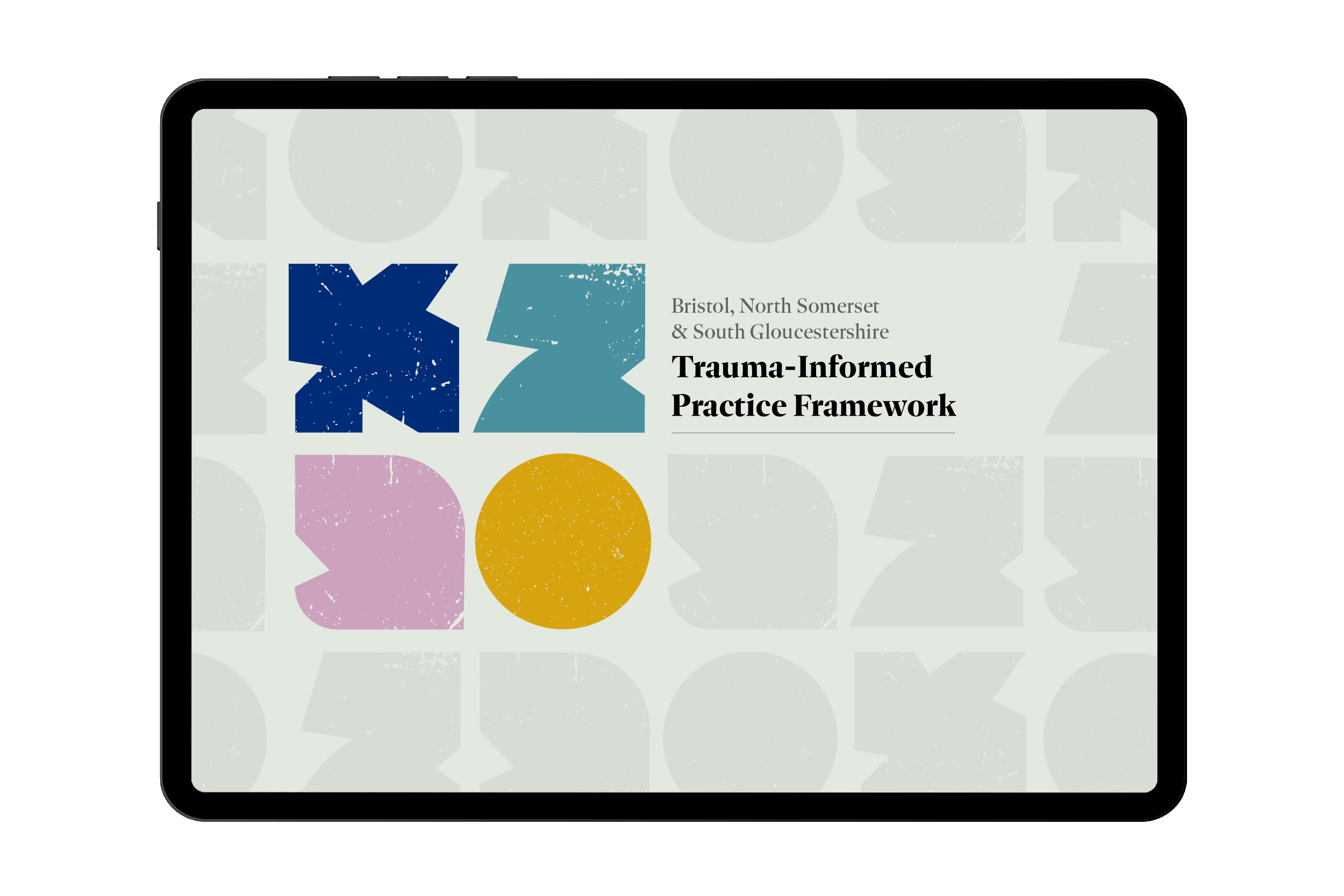

Our four shapes represent movement through the four phases of the framework, from Trauma-Awareness through to Trauma-Responsiveness, and the colour palette is used in tints to give the document structure across sections.
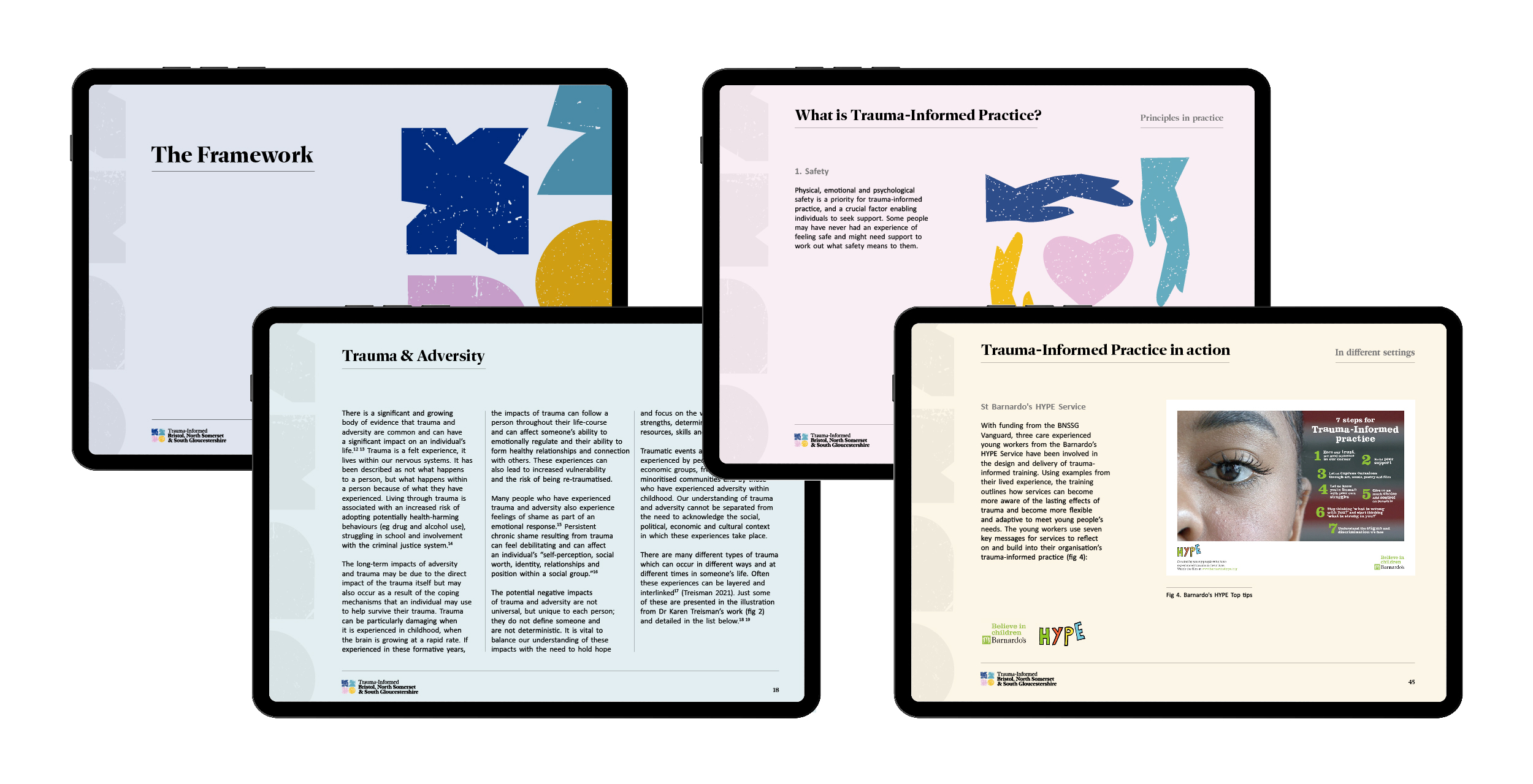
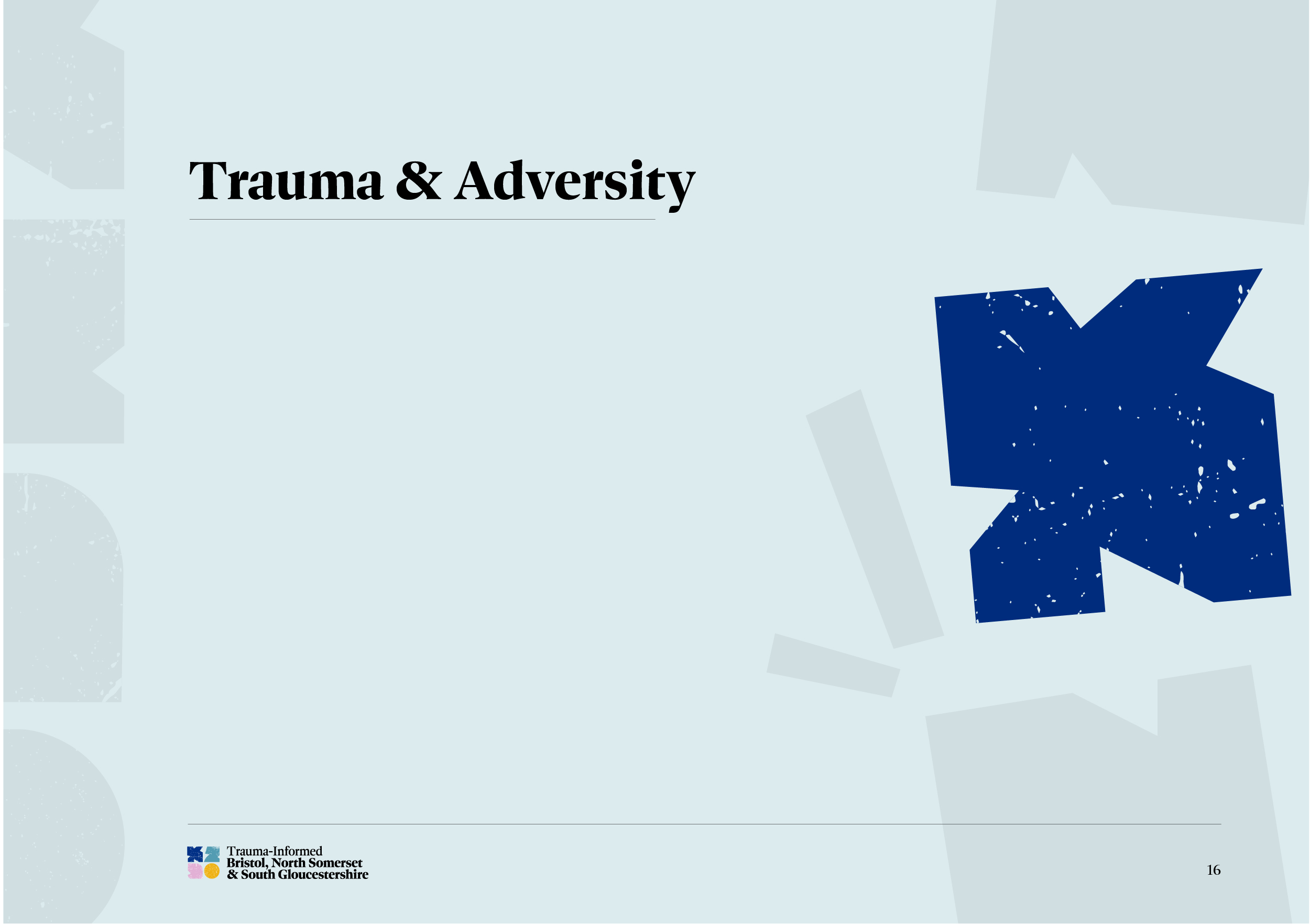
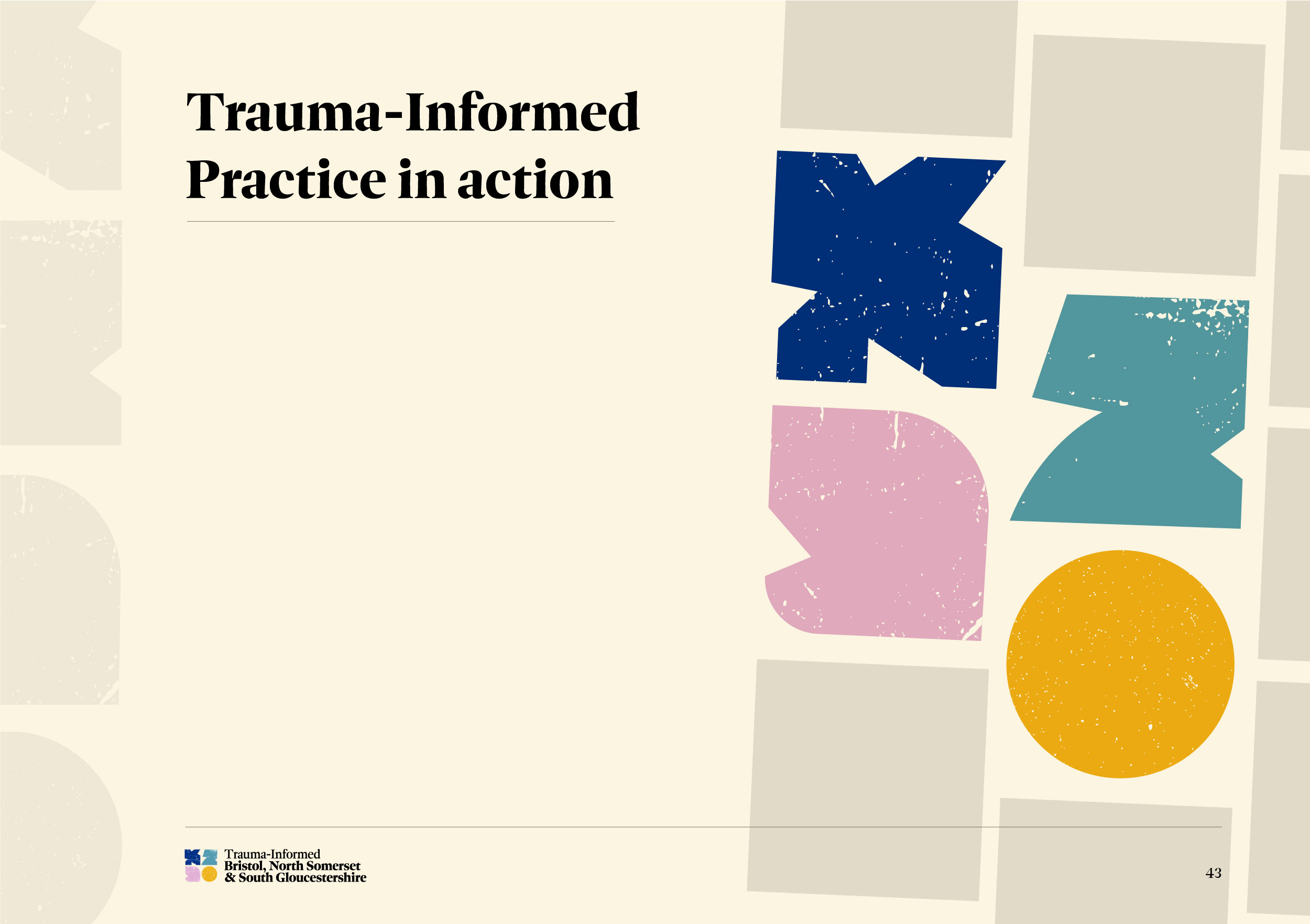
The design work was so well received by working/consultation group (and me!) It’s really beautiful and makes the whole thing so much easier to read and connect with. People loved the use of shapes and illustrations and how the design flows through the different stages of the document – thank you!
– Hazel Renouf, Trauma Informed Systems Manager
The design work was so well received by working/consultation group (and me!) It’s really beautiful and makes the whole thing so much easier to read and connect with. People loved the use of shapes and illustrations and how the design flows through the different stages of the document – thank you!
– Hazel Renouf, Trauma Informed Systems Manager






An illustration style based on the jagged shapes was made to represent the six Trauma-Informed Principles. Safety, Trustworthiness and transparency, Choice and clarity, Collaboration, Empowerment and Inclusivity.
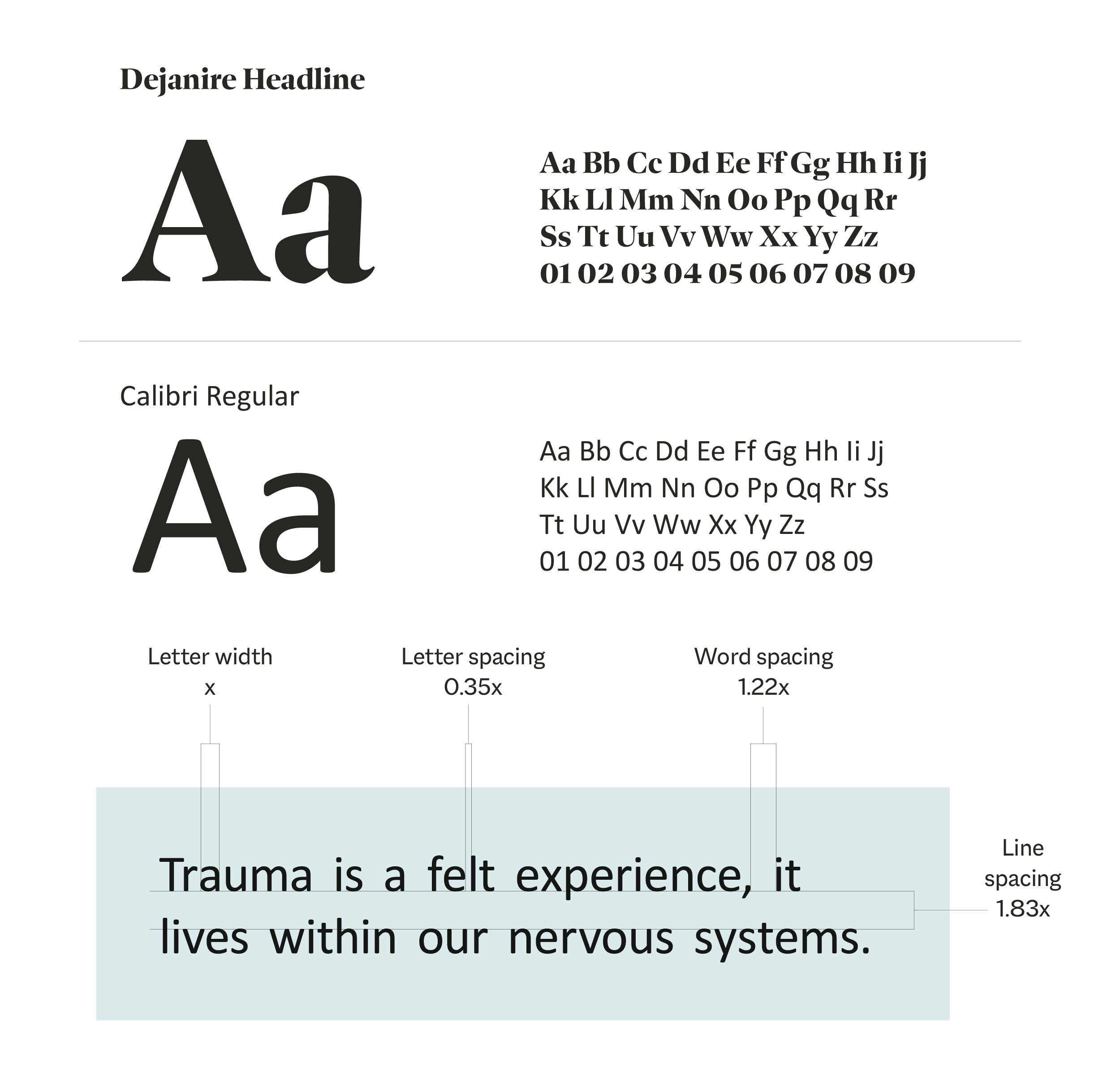
Dejanire was used as the main typeface due to it’s elegant and warm feel, with angular details which echo the jagged edges of the logomark. In order to maximise accessibility, body copy was set according to guidance from the British Dyslexia Association, with specific letter, word and line spacing to help with reading. This was all placed on off-white tints of the four main logo colours.
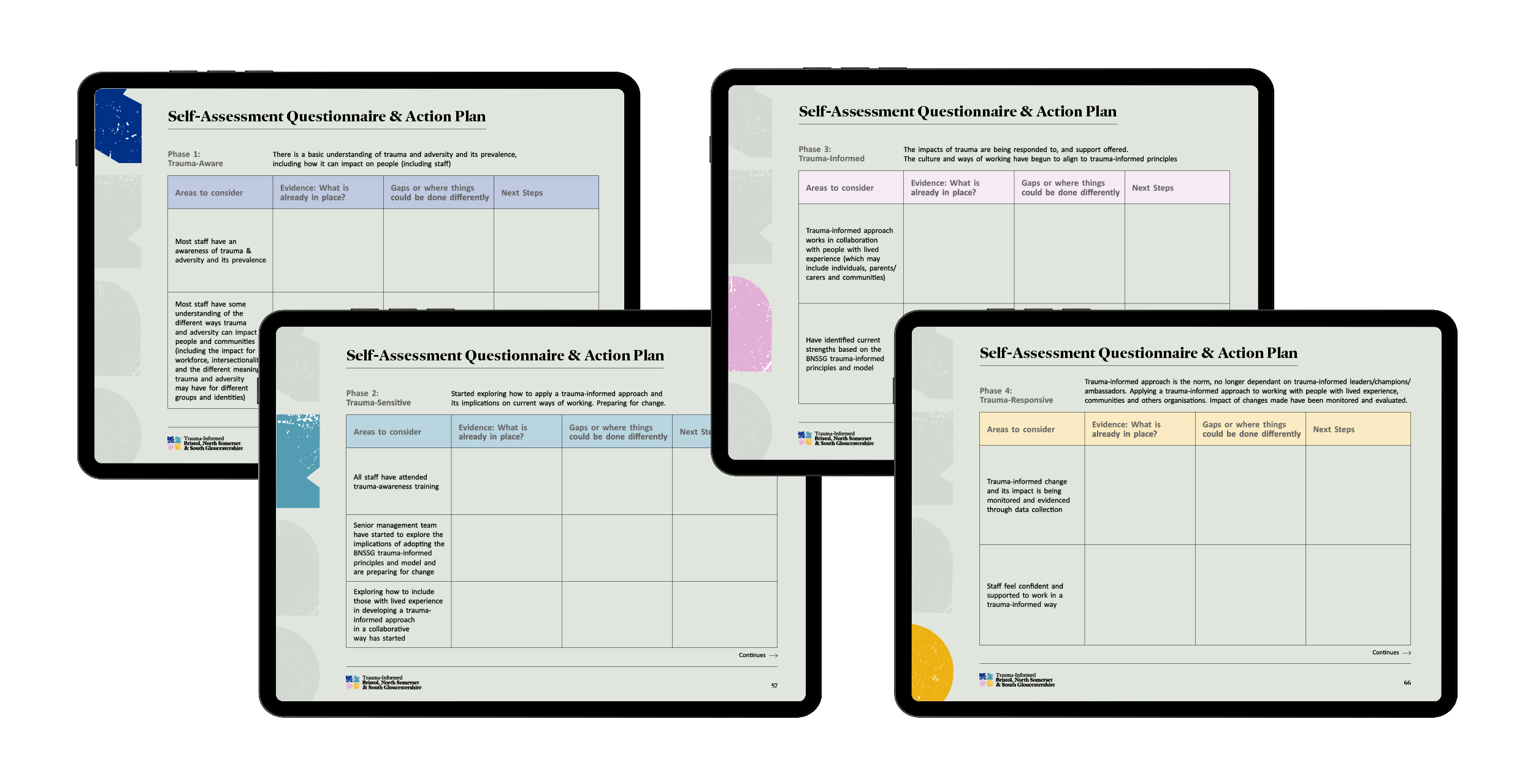
The final section of the report comes with a worksheet for practitioners to follow, which guides them through the four stages of Trauma-Informed practice. The whole document is designed to an A4 format, so that this final section can be easily printed and filled in.
